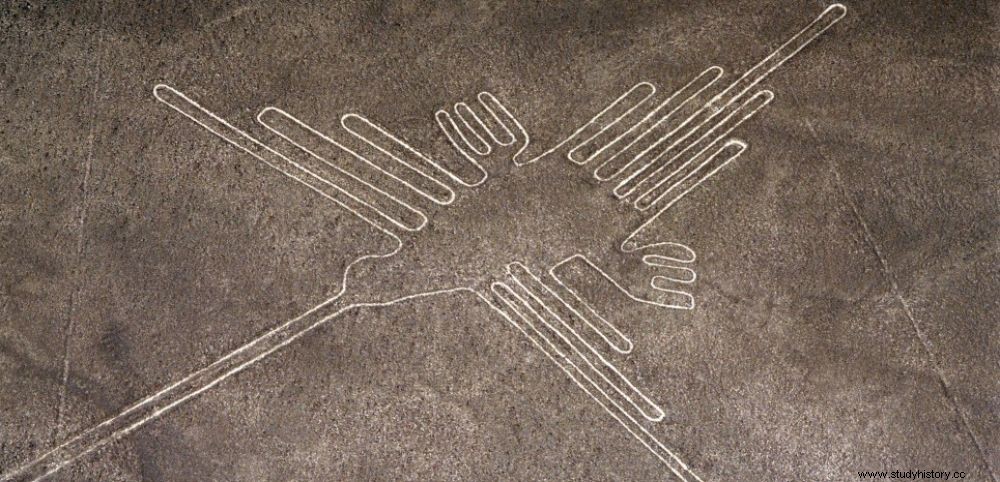 One of the famous Nazca geoglyphs.
One of the famous Nazca geoglyphs. For 10 years, Japanese archaeologist Masato Sakai has been discovering new prehistoric figures, called geoglyphs, at the famous Nazca site in southern Peru. In the summer of 2015, no less than 24 of these mysterious giant drawings traced on the ground, 1.5 kilometers north of the city of Nazca, that the anthropologist from the University of Yamagata (Japan) had announced to have found. 5 to 20 meters long, they would be representations of llamas made between 400 and 200 BC. At the end of 2015, a new geoglyph was discovered by the Japanese researcher's team. According to statements to AFP by the head of the heritage of this civilization within the Peruvian Ministry of Culture, archaeologist Johny Isla, "the figurative motif was discovered during a mission led by the researcher Masato Sakai , near the Majuelos ravine, about 12 kilometers from where the Nazca lines or geoglyphs are found... Hardly visible to the naked eye because of their gigantism, and especially the erosion which partially erases them, these giant patterns were identified using a 3D laser scanner. They are the work of the Nazca civilization which flourished at the foot of the Andes cordillera between the 4th century BC and the 4th century AD. Their originality is above all to have engraved on the ground arid desert, these strange assemblages that have never ceased to inflame the minds of men since a Spanish chronicler, Pedro Cieza de Leon, revealed their existence in 1551.
Drawn in negative on the gray floor
Drawing on a stony ground that the iron oxide colored in gray, the Nazcas, by scraping these superficial deposits, brought out as a negative the lighter gypsum soil located below. Why ? How did they do it? During the excavations carried out in recent years, the mystery has gradually been cleared up. Skilled weavers, accustomed to handling long threads, the Nazcas used ropes, manipulated from fixed points, to trace their figures. They were inspired by the same motifs as those that adorned their pottery or the precious textiles that made them famous. A reality far removed from the fanciful assumptions that were made in the middle of the 20 th century to explain these giant drawings, some not hesitating to evoke landing strips for extraterrestrials...
The geoglyphs would be linked to the agricultural calendar, a complex irrigation system, and places of ritual worship dedicated to the various deities of the Nazca pantheon. They have been listed on the UNESCO World Heritage List since 1994, but remain very fragile and are threatened by the proximity of urban areas. Remember that the Nazca lines are not unique in America, other geoglyphs have indeed been discovered in the desert of northern Chile, at Cerro Unitas, eight hundred kilometers away.
With Bernadette Arnaud
